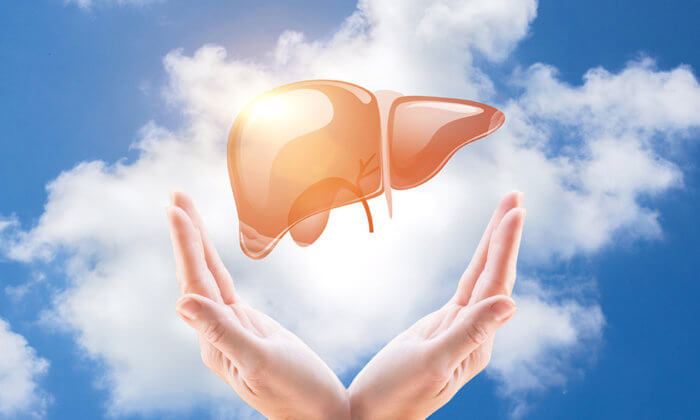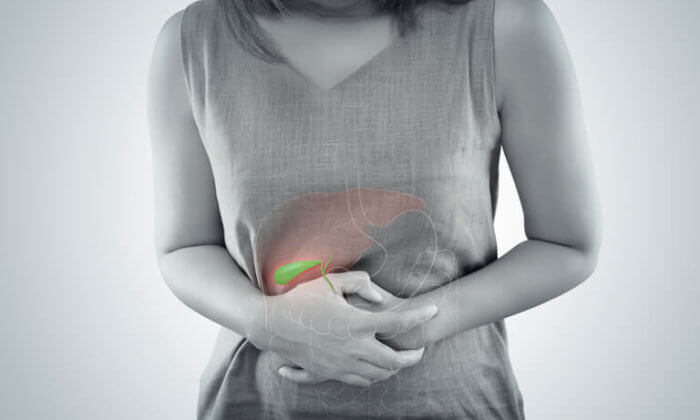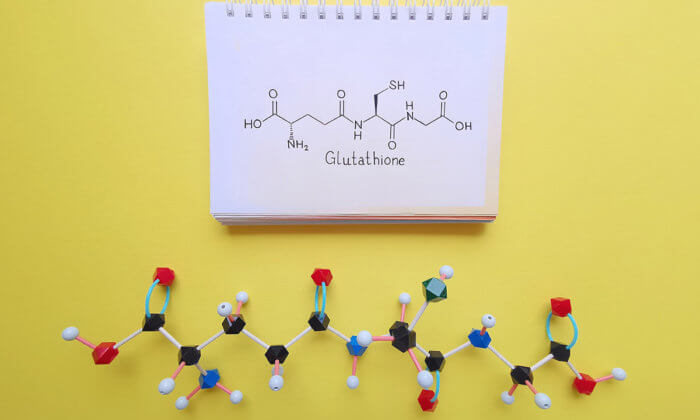How to Reverse Sarcopenia with HMB
Increase Your Muscle Mass and Strengthen Bones During Aging with the Advanced Amino Acid Supplement HMB
| | Reading Time: 8 minutes

How to Reverse Sarcopenia with HMB. The “use it or lose it” principle applies equally to mental and physical fitness. Without effort, we lose muscle mass and bone density, and brain cells die every day. This atrophic effect is incremental, slow, and progressive. Over time, we become duller, weaker, and flabbier with less muscle mass and fewer neurons.
Loss of muscle mass and bone density accelerates during aging causing muscle wasting and frailty. Sounds hopeless, but the good news is that there are proven ways to prevent muscle loss, regain strength, and improve body composition, even during aging.
Sarcopenia & Osteoporosis: Dual Enemies of Aging
Muscle mass and bone density go together. Muscles and bones are anatomically close and are synergistic in function. Done right, and when supported by diet and supplements, exercising muscles also improves bone strength.
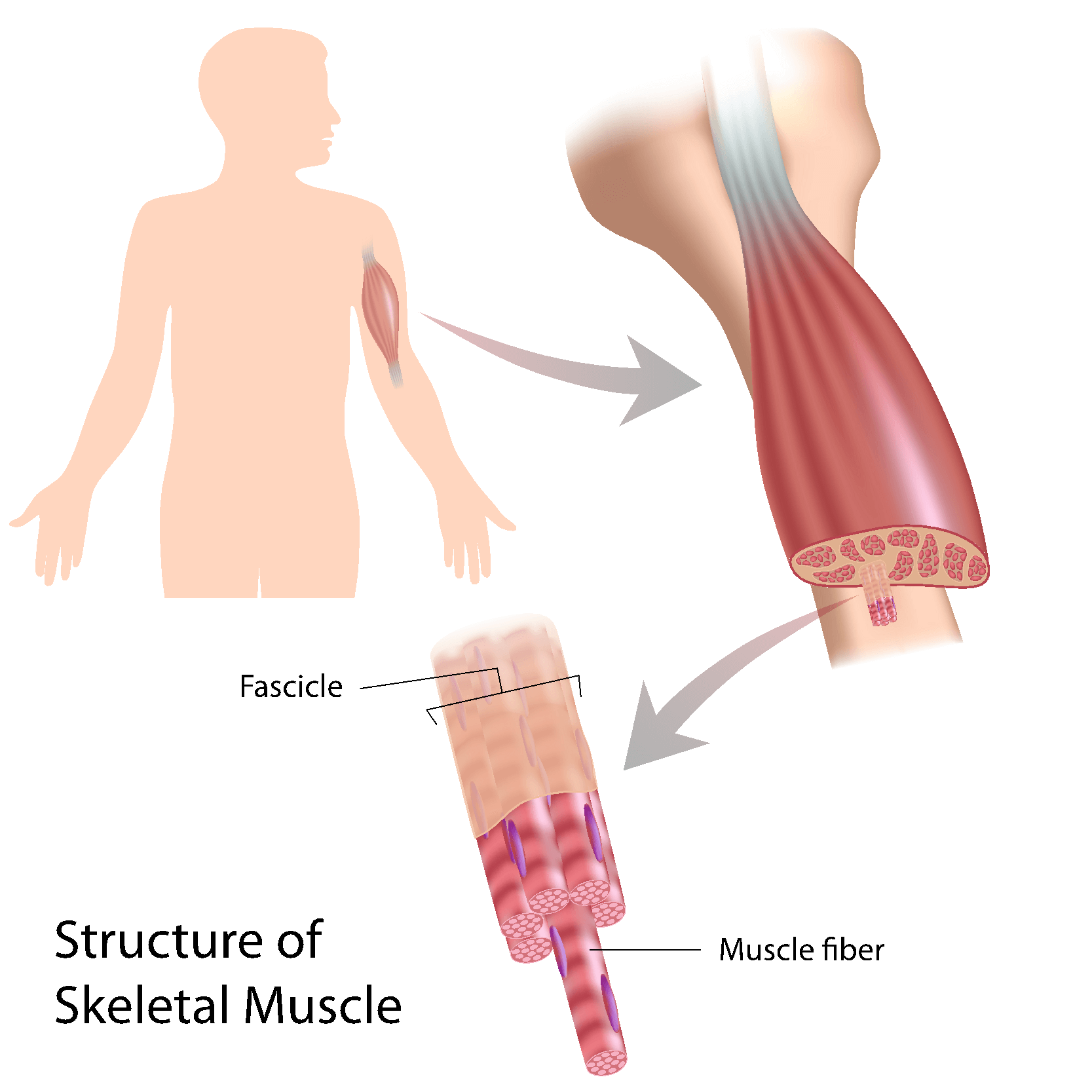
Muscle cells become larger with physical stimulation and use, whether it’s hard physical work or strenuous exercise. Bigger, more viable muscle cells integrate better with muscle tissue to form more functional muscle circuits – brawn to brain. That’s why even a skinny kid can become buff with weight training and strenuous physical workouts, and a high protein diet.
Living bone is a type of connective tissue, like muscles and ligaments. Minerals make up 50% of bone; mostly calcium, the other 50% is protein. When you take HMB with BCAAs to increase muscle mass and vitamin D3, you also benefit your bones.
Sarcopenia is the medical term for age-related loss of skeletal muscle resulting in thin extremities and significantly reduced physical performance.
Causes of Sarcopenia:
- Unhealthy diet
- Sedentary lifestyle
- Use of glucocorticoid drugs
- Chronic inflammation
- Steroid hormone deficiency: testosterone and estrogens
- Lack of strenuous activity
- Aging
Osteoporosis is a systemic skeletal disease with progressive bone tissue deterioration, leading to fragile bones with an increased risk for spontaneous fractures. Researchers believe there is a shared cause—interconnected biology of bone and muscle—with common metabolic pathways between sarcopenia and osteoporosis. That’s why when you improve muscle mass, you also benefit your bones.

An Active Lifestyle & Healthy Diet Prevent Muscle Loss
Exercise matters. An active lifestyle with strenuous physical activity, including resistance training, prevents muscle loss. Gardening, carpentry, and hiking with a backpack are good ways to keep fit and stay strong. Exercises that improve coordination like yoga and Tai qi improve the body’s ability to respond to growth signals. But, lifting weights at least twice a week improves muscle mass and tone better than low-impact aerobic exercises.
Diet matters. You have to eat enough food to keep your muscles and bones healthy. Low calorie and vegan diets do not support healthy muscle mass or strong bones without taking a vegetarian protein supplement. Unhealthy choices like consuming too much fat and sugar, not providing enough calcium, inadequate protein, insufficient antioxidants, and low micronutrient levels contribute to sarcopenia and osteoporosis.
To prevent and reverse sarcopenia, eat at least 20 grams of high-quality protein at each meal. Women’s protein requirement is less than men’s, but not by much. To rebuild muscle, you need more protein. Eat at least 30 grams of high-quality protein per meal. That may not seem like a lot but consider that one large egg has 6 grams of protein. Yogurt has about 20 grams per serving, making the right choice if you’re not dairy sensitive.
A serving of fish or shellfish beat eggs and yogurt, but not by much. Organically raised poultry or grass-fed beef provide the most protein per serving. Grass-fed beef is 95% lean and provides 24 grams per 4 ounces serving.
Proteins for Vegetarians
For vegetarians, protein choices include legumes like black beans, plus grains, seeds, and nuts. A cup of quinoa provides 8 grams of protein. Among my patients, the healthiest vegetarians eat a lot of food, especially grains and legumes. Quinoa is a good choice with 8 grams of protein per cup and contains all nine essential amino acids.
Researchers found it’s not only about the total protein you eat, but in particular, it’s the amino acid leucine that helps restore muscle loss. Leucine is a branch chain amino acid (BCAAs) and the primary regulator of muscle growth. It’s easy to gain muscle when you’re young—however, the body’s ability to synthesize leucine declines with age.
Supplementing with leucine may be oversimplifying muscle biology and the treatment of sarcopenia, but improving leucine levels will help muscle mass if you also do resistance training. However, there’s more to the leucine theory.
The Leucine Paradox
A 2006 study proposed taking an amino acid supplement with higher leucine. But other studies have shown that too much leucine shortens lifespan. Some researchers believe that low-calorie and protein-restricted diets promote longevity. Others are not so sure—the controversy centers around leucine.
It seems that a low leucine vegetarian diet regulates mTOR signaling and suppresses IGF-1. mTOR (mechanistic target of rapamycin) is a master regulator of cellular growth and metabolism that plays a central role in survival, lifespan, and aging. It promotes anabolic processes, including the biosynthesis of proteins, and limits catabolism. IGF-1 (insulin growth factor 1) is a hormone similar to insulin necessary for anabolic effects like muscle growth. It’s produced in the liver and requires the stimulation of GH (growth hormone).
Both IGF-1 and GH decline dramatically, starting in middle age. That’s why one of the central therapies of anti-aging medicine is GH replacement and IgF-1 enhancement.

However, these studies were on yeast and worms, not humans. But if they are right, we may trade a few extra years to be stronger and look better.
Quality, not just quantity, matters too. To get enough leucine, buy organic tuna, tofu, beans, cheese, pumpkin seeds, and eggs. If your diet is limited to vegetarian foods, add leucine as a supplement. But don’t take too much. Stay with the recommended daily allowance of 3-4 grams daily. However, to build muscle, you may need 8-10 grams. The best way to consume leucine is in a formula with other BCAAs (branch chain amino acids).
MB Plays its Role to Rebuild Muscle
It’s more potent on a gram per gram basis at reducing muscle protein breakdown than leucine alone though less effective at inducing muscle protein synthesis. Due to this property, HMB is considered an anti-catabolic agent (reduces muscle breakdown) rather than an anabolic agent (increases muscle mass). For best results, take leucine with HMB.
What Is HMB?
HMB (short for β-Hydroxy β-Methylbutyrate) is a metabolite of leucine. HMB might seem new, but it’s been around awhile. Research goes back to 1996. PubMed.gov lists 485 search results about HMB. It’s been available as a supplement since 1997 and a sought-after training agent for elite athletes. So why is it just now making headlines?
Much of HMB’s current marketing has to do with aging baby boomers, those born between 1946 and 1964, now 54-74 years old. Baby boomers make up nearly 72 million of the US population. By 2030 all baby boomers will be over age 65. And they have money. Baby boomers want to stay active, fit, and healthy. That’s a significant market for antiaging products and services.
Does HMB Work for Younger People?
If HMB is useful for those over 65 years, what can it do for an active 35-year-old who wants more muscle mass or a 55-year-old who doesn’t want to lose muscle mass as she ages? Studies in young adults demonstrate the HMB can increase strength, reduce fat, and improve muscle mass.
Role of Muscle Mitochondria
Though getting enough dietary protein provides the building blocks for muscles and bone, there may be more to sarcopenia than lack of amino acids. Optimal muscle mitochondria function is essential to prevent sarcopenia. Getting enough leucine also supports mitochondrial function. And extra arginine may help.
Just as with sarcopenia and osteoporosis, exercise also counts when it comes to your mitochondria. Aerobic exercises like bicycling, walking, and hiking improve muscle mitochondria function. Researchers found that mitochondrial density in muscle tissue increases in response to workouts.
More functional mitochondria result in better utilization of oxygen in muscle tissue. And positive mitochondrial adaptation improves fitness, builds healthier muscle and bones, and supports longevity.
How to Take HMB and Optimize Supplement Synergy
Men require more HMB than women who should take half the recommended amount. First, get enough leucine in a BCAA supplement to support HMB balance. Add additional nutrients for the best effect.
Synergistic nutrients include vitamin D3 for bone and muscle metabolism and Pyrroloquinoline quinone (PQQ) to promote mitochondrial function. PQQ also has antioxidant activity as it supports cellular energy. It enhances endurance by helping muscles adapt to intense exercise.
Improve muscle carnosine with beta-alanine. Beta-alanine can increase muscle carnosine levels, helping muscle remodeling during intense exercise. Carnosine deficiency is associated with both osteoporosis and sarcopenia. Glutamine deficiency is linked to sarcopenia and is associated with low-grade chronic inflammation. Supplementing with L-glutamine helps muscles, and it’s good for the gut.
When it comes to your health, balance is the key—getting enough dietary protein, supplementing with a BCAA formula with adequate leucine but not too much. Adding vitamin D3 may optimize HMB and improve muscle strength.
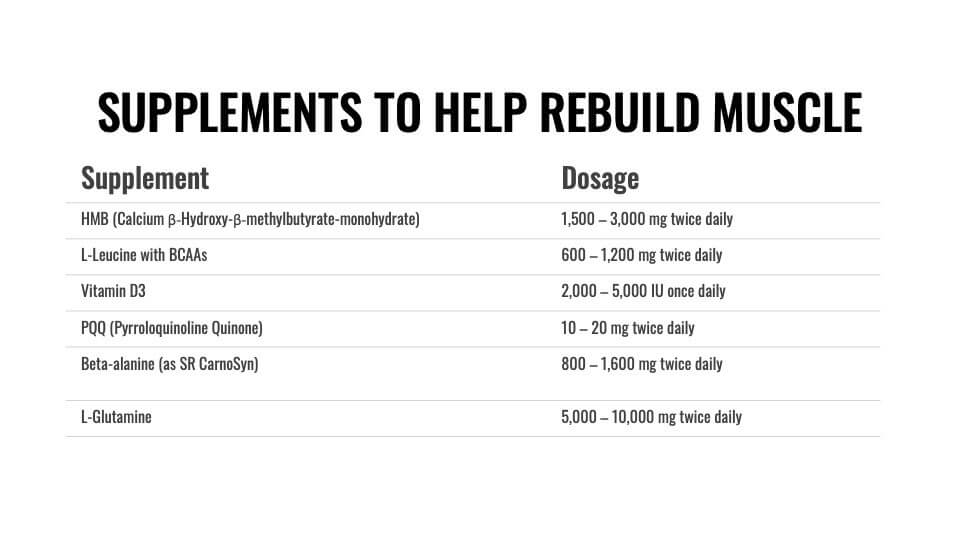
Your body’s biology is a fantastic molecular machine. It works exceptionally well when given the right stimulus like exercise combined with optimal nutrition. To keep your muscles supple and bones strong, consider adding HMB to your supplement plan. HMB is a safe supplement without known side effects when taken in recommended dosages.
Prevent Muscle Loss and Help Reverse Sarcopenia
WILLIAMS ADVICE: If you want to live longer, healthier, and stronger, get enough dietary protein and supplement with HMB. Include synergistic supplements to improve mitochondrial function. Establish a regular exercise schedule and stick to it. But the exercises you learned in high school are not your starting point and can even hurt you. Build muscle but spare your joints and ligaments.
It’s okay to increase muscle metabolism with branch chain amino acids, especially leucine, but don’t shorten your lifespan in exchange for a muscular body.
Sarcopenia comes on slowly. So, watch for the early signs. Don’t underestimate sarcopenia. A diagnosis of sarcopenia means an increased risk for falls and hip fracture, and a shortened lifespan.
More Information on Dr. Williams:
- For current patients, order pharmaceutic grade supplements from Dr. Williams’ protocols on Wellevate or Fullscript.
- If you’re new to Dr. Williams’ content, sign up for Wellevate to order professional-grade supplements on your own and receive a complimentary discount on all orders.
- Check out his books Viral Immunity and Beating the Flu, and articles about the coronavirus pandemic on Medium.
- Sign up for the next Q&A on natural health, where he teaches the key “how to” points from recent blogs on Instagram Live.
